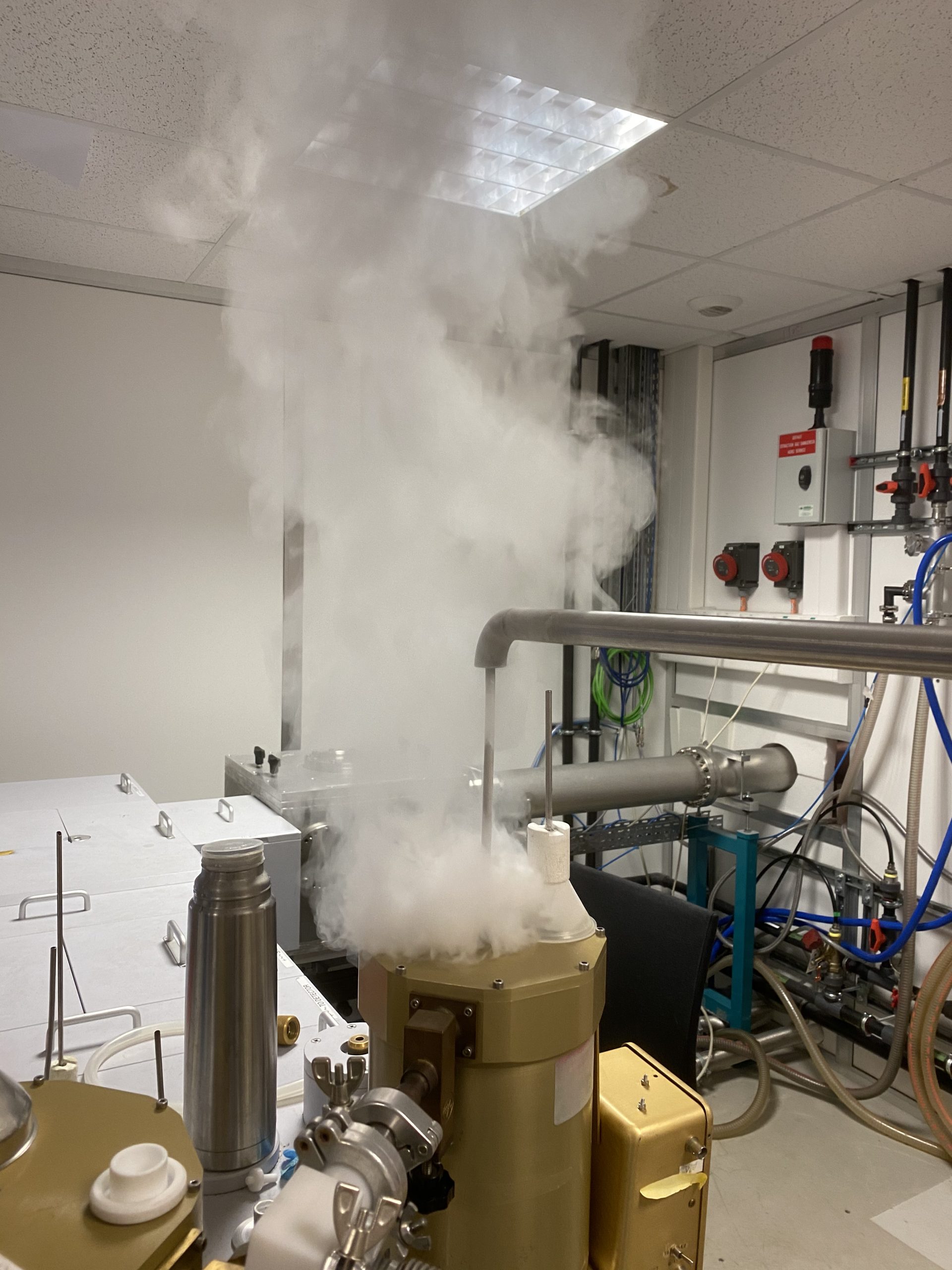Atmosphere of Titan: research work carried out at the ICB

In collaboration with the University of Brussels, LISA and LESIA, researchers (MARS team) from the Carnot Interdisciplinary Laboratory in Burgundy (ICB) focused on a crucial study on the atmosphere of Titan, Saturn’s moon , and in particular on the signatures of methane in the far infrared. This molecule is of fundamental importance for the exploration of planetary atmospheres, particularly for NASA’s next mission, Dragonfly, which plans to use a drone to explore Titan.

- Read the article of the Soleil Synchrotron
- Richard, C., Boudon, V., Manceron, L., Vander Auwera, J., Vinatier, S., Bézard, B., Houelle, M. “Self and N2 collisional broadening of far-infrared methane lines at low-temperature with application to Titan" Icarus., 404:art.n° 115692. (2023).
- Contact : C. Richard, cyril.richard@u-bourgogne.fr
Methane is a molecule that, in principle, should not absorb infrared radiation due to the lack of a permanent dipole moment. However, when this molecule is in excited rotational or vibrational states, weak infrared absorptions occur. The researchers undertook an in-depth study of the infrared spectra of methane at different pressures, at low temperatures, and in the presence of a gas mixture similar to Titan’s atmosphere, mainly composed of nitrogen and methane.
These measurements, despite their low intensity, are essential for understanding Titan’s atmosphere, and in particular the parameters of the broadening of spectroscopic lines, which contributes to improving atmospheric models. In anticipation of upcoming space missions, such as Dragonfly, scientists need baseline data to compare with data collected during these missions, similar to what was done for the Cassini-Huygens mission.
To carry out this study, the researchers used the synchrotron, an instrument producing high brightness light in the far infrared, available on the AILES de SOLEIL line. In addition, thanks to specific equipment, they were able to carry out infrared absorption measurements at very low temperatures, similar to those of Titan’s atmosphere, thus compensating for the low density of molecules to study. These techniques made it possible to observe the absorptions of methane mixed with nitrogen in the infrared range.
The work carried out made it possible to precisely measure the broadening coefficients of the methane absorption lines, as well as their dependence on temperature. These results constitute a valuable tool for astronomers, allowing them to precisely determine the concentration profile of methane in Titan’s atmosphere.
- kc_data:
- a:8:{i:0;s:0:"";s:4:"mode";s:2:"kc";s:3:"css";s:0:"";s:9:"max_width";s:0:"";s:7:"classes";s:0:"";s:9:"thumbnail";s:0:"";s:9:"collapsed";s:0:"";s:9:"optimized";s:0:"";}
- kc_raw_content:
- [kc_row use_container="yes" _id="411310"][kc_column width="12/12" video_mute="no" _id="903311"][kc_column_text _id="841455"]
In collaboration with the University of Brussels, LISA and LESIA, researchers (MARS team) from the Carnot Interdisciplinary Laboratory in Burgundy (ICB) focused on a crucial study on the atmosphere of Titan, Saturn's moon , and in particular on the signatures of methane in the far infrared. This molecule is of fundamental importance for the exploration of planetary atmospheres, particularly for NASA's next mission, Dragonfly, which plans to use a drone to explore Titan.
[/kc_column_text][kc_spacing height="20" _id="591450"][/kc_column][/kc_row][kc_row use_container="yes" _id="33281"][kc_column width="45%" _id="344898"][kc_single_image image_size="full" _id="538192" image_source="media_library" image="43776"][kc_spacing height="20" _id="273471"][kc_column_text _id="123848"]- Read the article of the Soleil Synchrotron
- Richard, C., Boudon, V., Manceron, L., Vander Auwera, J., Vinatier, S., Bézard, B., Houelle, M. "Self and N2 collisional broadening of far-infrared methane lines at low-temperature with application to Titan" Icarus., 404:art.n° 115692. (2023).
- Contact : C. Richard, cyril.richard@u-bourgogne.fr
Methane is a molecule that, in principle, should not absorb infrared radiation due to the lack of a permanent dipole moment. However, when this molecule is in excited rotational or vibrational states, weak infrared absorptions occur. The researchers undertook an in-depth study of the infrared spectra of methane at different pressures, at low temperatures, and in the presence of a gas mixture similar to Titan's atmosphere, mainly composed of nitrogen and methane.
These measurements, despite their low intensity, are essential for understanding Titan's atmosphere, and in particular the parameters of the broadening of spectroscopic lines, which contributes to improving atmospheric models. In anticipation of upcoming space missions, such as Dragonfly, scientists need baseline data to compare with data collected during these missions, similar to what was done for the Cassini-Huygens mission.
To carry out this study, the researchers used the synchrotron, an instrument producing high brightness light in the far infrared, available on the AILES de SOLEIL line. In addition, thanks to specific equipment, they were able to carry out infrared absorption measurements at very low temperatures, similar to those of Titan's atmosphere, thus compensating for the low density of molecules to study. These techniques made it possible to observe the absorptions of methane mixed with nitrogen in the infrared range.
The work carried out made it possible to precisely measure the broadening coefficients of the methane absorption lines, as well as their dependence on temperature. These results constitute a valuable tool for astronomers, allowing them to precisely determine the concentration profile of methane in Titan's atmosphere.
[/kc_column_text][/kc_column][/kc_row]
